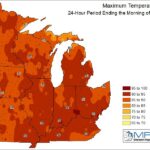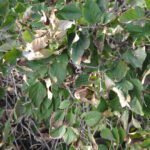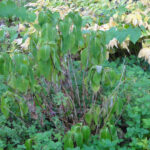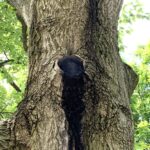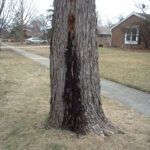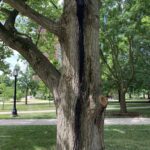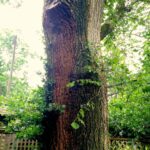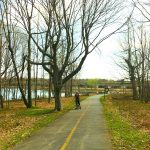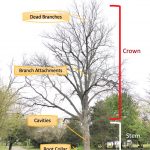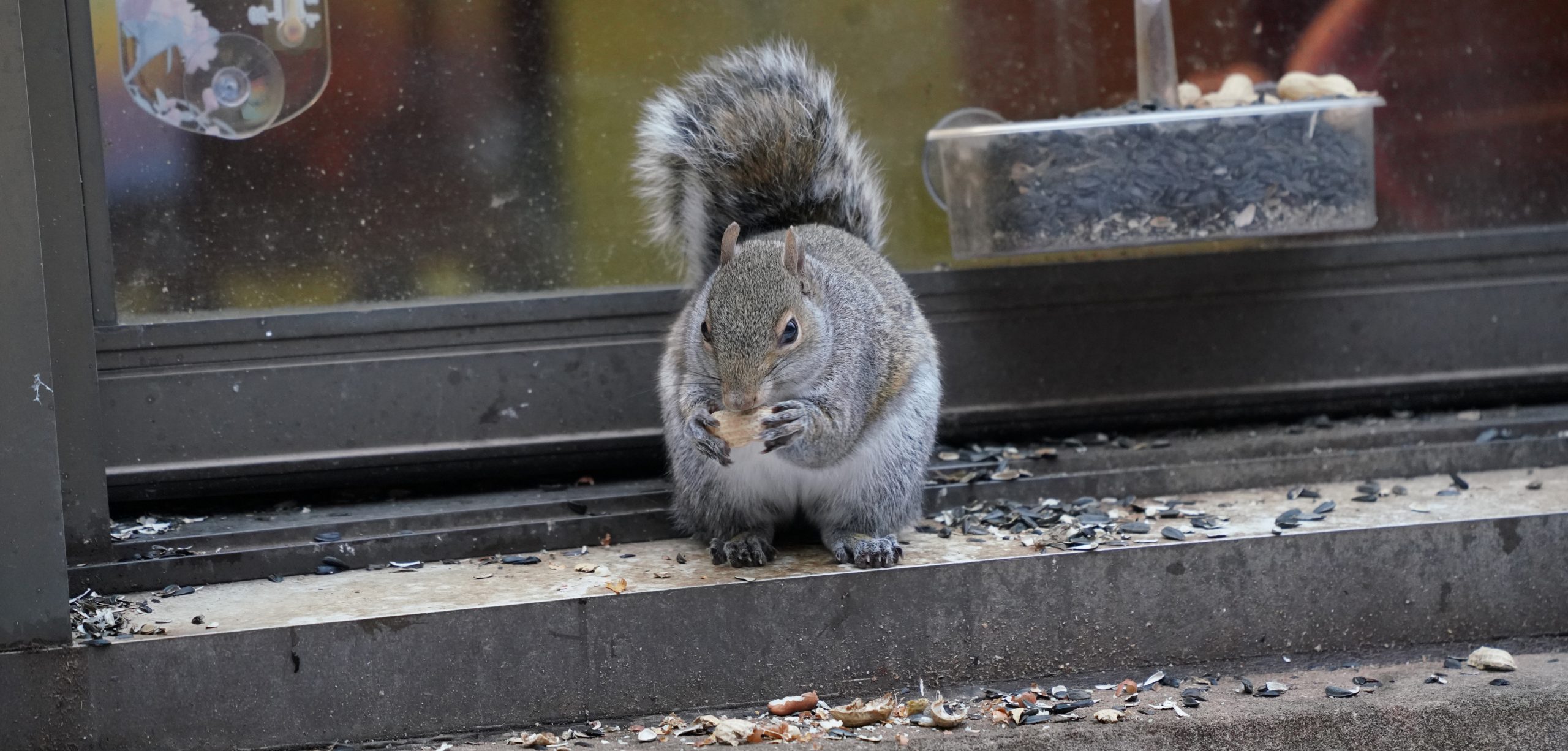 Purdue University - Extension - Forestry and Natural Resources
Purdue University - Extension - Forestry and Natural Resources
Got Nature? Blog
Purdue Extension forester Lenny Farlee tells you where to find and how to identify a species that clings to many of our trees, poison ivy. Protect yourself from the itch by recognizing this species before it is a problem.
If you have any questions regarding trees, forests, wildlife, wood products or other natural resource topics, feel free to contact us by using our Ask an Expert web page.
Resources
Poison Ivy, Purdue Landscape Report
Poison Ivy, Purdue Extension
Poison Ivy, The Education Store, Purdue Extension resource center
Investing in Indiana Woodlands, The Education Store, Purdue Extension resource center
Tree Appraisal and the Value of Trees, The Education Store
Forest Improvement Handbook, The Education Store
ID That Tree, Playlist, Purdue Extension – Forestry and Natural Resources Youtube Channel
A Woodland Management Moment, Playlist, Purdue Extension – Forestry and Natural Resources Youtube Channel
Lenny Farlee, Sustaining Hardwood Extension Specialist
Purdue University Department of Forestry and Natural Resources
Purdue Landscape Report: Hot, dry summers are not that unusual in the Midwest, but 2020’s hot dry spell started considerably earlier than usual, before summer even officially began! To make it a triple whammy, the hard freeze in early May caused some landscape plants to burn up more stored carbohydrate reserves to produce a second round of foliage.

(Figure 1) US Drought Monitor
I’m sure I don’t have to point out that most of Indiana is currently experiencing abnormally hot, dry conditions. Although recent rains have brought relief to some areas, any respite is sure to be temporary. Seasonal thunderstorms may deluge some landscapes with water while other areas, even those close by, may stay fairly dry. Much of the area has experienced highs in the upper 80’s to over 90º F over the past month.
Leaf scorch on trees and shrubs, appearing as a browning along the edges of the leaves, is very common in dry summers. While minor cases of leaf scorch are not very harmful, prolonged lack of moisture can spell disaster for landscape plants.
Young and newly established plants are most susceptible to the dry conditions, but even established plants may reach a critical point during prolonged drought. If the heat and drought continue this summer, branch dieback, combined with eventual root death, will make plants more susceptible to winter injury. Plants that were already under stress from other factors may succumb to severely dry soils.
The intense heat makes it difficult for plants to keep up with water and cooling requirements, even in areas where moisture is adequate. One of the ways that plants cool themselves is through transpiration, which allows water to evaporate from the foliage. Plant leaves have pores called stomata that can open and close to allow water vapor and gas exchange with the environment. During extreme heat and/or drought, stomata will nearly close, thus reducing transpiration and exchange of carbon dioxide and oxygen. The end result is seen as wilting foliage and leaf scorch. But not so obvious is that reduced water uptake and gas exchange also leads to reduced production of carbohydrates through photosynthesis and reduced uptake of soil nutrients, having longer term impact on plant health.
There is still plenty of summer yet to get through to see the further challenges ahead. Meanwhile, we can mitigate some of the stress by watering landscape plants as needed where feasible.
Resources
US Drought Monitor
Indiana – Purdue Rural Emergency Preparedness, Purdue Extension website
In Times of Drought, Indiana Yard and Garden, Purdue Consumer Horticulture
Drought? Don’t Forget the Trees, The Education Store, Purdue Extension resource center
Turfgrass Disease Profiles: Summer Patch, The Education Store
Iron Chlorosis of Trees and Shrubs, The Education Store
, Extension Consumer Horticulturist
Purdue University Department of Horticulture and Landscape Architecture
Welcome to the Nature of Teaching Professional Development Webinar Series: Ecotoxicology Part 1. This webinar shared by Rod Williams, a professor and extension wildlife specialist with Purdue University Extension, and Jason Hoverman, an associate professor at Purdue University and a co-author on the unit on ecotoxicology, discusses the principles of ecotoxicology, contaminants, and threats to the freshwater ecosystems.
This webinar shares the resources teachers, and K-12 leaders, need to teach students about ecotoxicology. This state standard curriculum includes free downloads of posters, photos, charts, data sheets, and fun activities along with the opportunity to receive a Certificate of Completion.
Resources
The Nature of Teaching: Ecotoxicology and Environmental Health, The Education Store, Purdue Extension’s resource center
Benefits of Connecting with Nature, The Education Store
The Nature of Teaching: Disease Ecology, The Education Store
Resourceful Animal Relationships, The Education Store
The Nature of Teaching, YouTube Channel
Nature of Teaching, Website
Rod Williams, Professor of Wildlife Science
Purdue University Department of Forestry and Natural Resources
Jason Hoverman, Associate Professor Vertebrate Ecology
Purdue University Department of Forestry and Natural Resources
Purdue Landscape Report: Slime flux (also known as wet wood) is a dark, foul-smelling and unsightly seepage of sap from tree trunks (fig. 1). The disease is not usually a serious problem but the appearance can be alarming. Slime flux is caused by common surface-inhabiting bacteria or yeast fungi that enter the trunk through wounds associated with improper pruning, stem breakage, injections, cracks from freeze injury or weak limb crotches. The bacteria and yeast may live on sap nutrients within injured trees for many years without any outward evidence.
Symptoms
The main symptom is the appearance of the dark sap oozing on the trunk exterior which happens when gasses produced by growth of the bacteria and yeast cause the internal pressure of the sap to become high enough to force the sap out through cracks in the bark. The dark streaks usually turn light gray or white upon drying. Oozing sap may be frothy and white at the point of exit. Airborne bacteria, yeasts, and fungi often colonize the wet oozing material, which ferments and releases a foul odor. Slime flux may delay wound healing (callus formation).
Slime flux is extremely common on mature elms (fig 2), oak (fig 3) and mulberry; and is seen less frequently on maples (fig 4), paper birch, sycamore, and walnut.
Prevention
There is no control or treatment for slime flux. Inserting a drain tube into the tree to relieve pressure and drain infected sap was once an accepted treatment, but is no longer recommended and may do more harm than good. Boring holes in affected trees causes internal spread of the bacteria within the tree and may allow entry of wood decay fungi.
To reduce the chances of susceptible trees developing wet wood avoid unnecessary wounding of the trunk and branches. Proper pruning techniques, HO-4-W, will allow branches to heal more rapidly. Make sure susceptible trees receive good general care; including irrigation when needed and mulch to conserve moisture and keep mowers away from the trunk. Avoid excess traffic in tree root zone to prevent soil compaction and root injury.
The first and most important step for managing a tree disease is to accurately diagnose the problem. The best approach to diagnosis of tree problems is to start by submitting photos of the tree via the digital upload tool on the Purdue Pest & Diagnostic Lab (PPDL) website. In the case of slime flux it is impractical to collect the type of physical sample needed for confirmation so photos are the best alternative.
References
Sinclair, W. A. and H. H. Lyon. 2005. Diseases of trees and shrubs. Cornell University Press, Ithaca, NY. 660 pp.
Stipes, R. J. and Campana, R. J. (eds.) 1981. Compendium of Elm Diseases. APS Press, St. Paul, MN.
Resources
Diseases in Hardwood Tree Plantings , The Education Store, Purdue Extension’s resource center
Iron Chlorosis of Trees and Shrubs, The Education Store
Surface Root Syndrome, The Education Store
Tom C Creswell, Clinical Engagement Professor – Plant & Pest Diagnostic Laboratory
Purdue University Department of Botany and Plant Pathology
Lindsey Purcell, Chapter Executive Director
Indiana Arborist Association
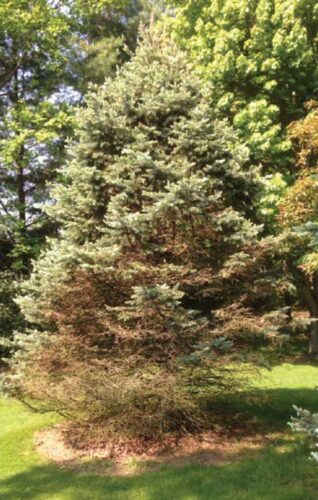 Question: I have a blue spruce that is 40-years old and very tall. It is dying up the middle. I have read about the Needle Cast problem. Also read about Spectro 90 copper based fungus control. I can only spray so high. Is there a chemical that can be placed on the ground to be absorbed by the tree?
Question: I have a blue spruce that is 40-years old and very tall. It is dying up the middle. I have read about the Needle Cast problem. Also read about Spectro 90 copper based fungus control. I can only spray so high. Is there a chemical that can be placed on the ground to be absorbed by the tree?
Answer: Thank you for contacting us regarding your tree issues. Rhizosphaera needle cast (Rhizosphaera kalkhoffii) is a foliar disease of spruce trees. It is most common in trees growing outside of their native range. It starts on the inner and lower growth and progresses upward through the tree. It can take up to 15 months for the needles to show visible symptoms after the initial infection. Young trees may be killed by this disease, but usually branches die off after 3-4 consecutive years of defoliation, causing trees to look disfigured.
Early identification of Rhizosphaera can prevent major damage to individual trees and prevent the spread to nearby trees. Protecting new growth as it emerges is very important. For best effectiveness, fungicides should be applied when the emerging needles are half elongated (1/2 to 2 inches in length). Needle cast diseases can be effectively controlled with fungicides containing chlorothalonil. For Rhizosphaera needle cast, two properly-timed applications per year for at least two consecutive years, and sometimes three years, is required for control. Heavily infected trees may require several years of fungicide applications but should be sprayed, soil drenches are not effective. Also, clean-up of any infected needles and branches will help reduce the spread of the disease.
Resources
Needle cast in Colorado Blue Spruce, Purdue Landscape Report
Blue Spruce Update, Purdue Landscape Report
Why Spruce Trees Lose Their Needles, Purdue Extension
Blue Spruce Decline, Purdue Extension
Diseases Common in Blue Spruce, Purdue Extension
Tree Installation: Process and Practices, The Education Store, Purdue Extension resource center
Tree Planting and Urban Forestry Videos, Subscribe to our Purdue Extension-FNR YouTube Channel
Find an Arborist, International Society of Arboriculture
Lindsey Purcell, Urban Forestry Specialist
Purdue University, Department of Forestry and Natural Resources
Purdue Landscape Report: Trees provide many benefits for our homes and properties. If a tree is found to have a defect such as dead branches or broken limbs from a storm; it can become a risk issue. It is important to understand that tree owners have a duty to inspect and maintain their trees. All property owners should take reasonable steps to protect themselves by involving a qualified consultant or certified arborist when needed.
All trees have some sort of risk involved with it. They are living organisms that are endangered by environmental impacts and pests. However, it is important to create a balance between the risk a tree may pose and the benefits provided by the tree. We don’t want to remove trees unnecessarily, but rather reduce the liability by Identifying, analyzing and evaluating the problem.
Inspect regularly: Trees should be assessed through inspections by a qualified arborist, preferably an International Society of Arboriculture Certified Arborist. It is especially important to inspect trees after major weather events. At a minimum, trees should be carefully checked out every 3-5 years.
Document and maintain records: Every inspection should be recorded and kept on file for future reference. Past evaluations can show how a tree has changed in its health and structure over the years. Also, these written evaluations could minimize liability if a failure occurs and a claim is filed against the tree owner.
Tree Inspections: For a tree to be considered a risk it must be defective and a target that is threatened.
A target is people, property or activities that could be injured, damaged or disrupted by a tree failure. Review everything in the target zone. This should include the area inside a circle around the tree, which is at least as wide as the total tree height.
Read the body language of the tree. Inspect each section of the tree including the crown, branches and root zone to check for signs of failure. These include:
- Dead, diseased, dying or broken branches.
- Thinning or poor canopy health.
- An unstable branching pattern overextended or weakly attached branches, or cracks in the stems.
- Cracks or decayed areas in the main trunk.
- Exposed or decayed roots, heaving of the soil, fungus growth or cracks in the soil around the root plate.
Among the characteristics to consider when conducting tree risk evaluations are:
- Decay, cankers, cracks and other positive indicators of weakness in the roots, stems and branches.
- Canopy size, shape and weight distribution. This is especially true in situations where a tree is exposed to windy conditions, is leaning or has a poor stem-to-canopy ratio.
- Crown architecture. Poor branching and similar characteristics can create high-risk situations in strong winds and other weather conditions.
- Plant health and vigor. This determines how a tree can overcome wounding or pest infestations.
What do you do when a defect is found?
The goal is to reduce the likelihood of failure. Most of the time pruning can improve risk situations. Perhaps cabling and bracing may be an option. Also, plant health care improves the trees condition which can reduce risk… the last option should be removal and that should be an informed decision.
Recurrent inspections to determine tree health and condition are important for sustainable, long-lived tree plantings. The most important factor for any tree owner is know when to contact an ISA Certified Arborist who understands tree risk assessment. They can help with the decision making for the tree if there are concerns about its safety and health.
For more information refer to the publication Tree Risk Management and Trees and Storms at the Purdue Education Store.
Find a certified arborist in your area by going to Trees are Good.
Resources
Planting Problems: Trees Planted Too Deep, Video, Purdue Extension – Forestry and Natural Resources Youtube Channel
Planting Your Tree Part 1: Choosing Your Tree, Video, Purdue Extension Youtube Channel
Tree Planting Part 2: Planting a Tree, Video, Purdue Extension Youtube Channel
Tree Appraisal and the Value of Trees, The Educational Store, Purdue Extension resource center
Surface Root Syndrome, The Education Store
Iron Chlorosis of Trees and Shrubs, The Education Store
Tree Pruning Essentials, Publication & Video, The Education Store
Cold Injury to Trees, Got Nature? Post, Purdue FNR Extension
Lindsey Purcell, Urban Forest Specialist
Purdue University Department of Forestry and Natural Resources
Question: We live in eastern Tippecanoe county and have a couple of adult squirrels that seem to be sick. They act like they are drunk — falling over frequently. We have two apple trees in blossom, and they come and nibble on fallen branches/blooms. As they sit on their hind legs to eat, they fall over on the ground like they are dead. Then after a few minutes/flip around and get up again, only to fall over “dead” again. This has been going on for a few weeks. We also have a baby that is not afraid of people – does not run away from me or our dog. This baby appears to have missing hair/or possible mange? We also had a raccoon in early March that came toward my husband in the yard – was not afraid of him. It did not appear rabid, but did not run away either. We do have several bird feeders, one of which squirrels and chipmunks sit on and eat the bird food. Is what they are eating making them “sick/drunk” or is this something else? I googled and found possible raccoon roundworm? What do YOU think this is — and could these cases be related? How should I dispose of any dead animals, and should I be concerned for us or our dog?
Answer: What you describe could be a number of wildlife diseases. The clinical signs of many of these diseases are often similar and infection can only be determined through specific examinations, tests or lab work. It may be canine distemper. Both squirrels and raccoon can carry canine distemper. The disease is spread by direct contact with body fluids or droppings of an infected animal. Humans cannot get distemper. However, it may also be another disease or a separate disease for each species. Your choices are really to 1) do nothing or 2) contact a wildlife rehabilitator (see below). In Indiana, wildlife rehabilitators have necessary state and federal permits to house and care for sick or injured wild animals. No federal or state agencies will provide care for sick and injured animals.
Since wild animals can carry diseases that are dangerous to people, direct contact with wildlife is discouraged. Just as the case with people, you can’t tell if an animal is sick just by looking at them. Expression of clinical signs of diseases are not the same for every animal. It may also take a period of time for clinical signs to present themselves. An animal that appears perfectly healthy may have a disease, and may be able to transmit the disease.
I could find no specific guidelines for the disposal of dead wild animals. The Indiana State Board of Animal Health lists allowable methods of dead animal disposal, but these do not apply to wildlife, which they specify as creatures not under someone’s care. This is guidance on the DNR website for:
Dead Birds: “According to Indiana State Department of Health guidelines, if you need to dispose of a dead bird, do not handle it with your bare hands. Use gloves or a plastic bag turned inside out over your hand to pick up the bird and dispose of the bird/bag in the trash. You can follow these recommended disposal procedures regardless of the cause of death, if testing is not available.”
Dead Bats: “Do NOT pick up a bat with your bare hands. Any wild animal can carry disease, therefore precautions should be taken if an animal needs to be moved. Wear heavy-duty leather gloves and scoop up the bat with a shovel or container. If the bat is alive move it to a tree branch, away from nearby buildings if possible. To dispose of a dead bat, scoop it into a plastic bag. Place it into another plastic bag, close it securely, spray with disinfectant, and dispose of it in your trash.”
• Indiana Licensed Wildlife Rehabilitators, Indiana Department of Natural Resources – Fish and Wildlife.
Other Resources
Protecting Yourself from Wildlife Diseases: Raccoon Roundworm (Baylisascaris procyonis), The Education Store, Purdue Extension resource center
Indiana Animal Disease Diagnostic Laboratory
Orphaned Wildlife, Got Nature? blog
Orphaned & Injured Animals, Indiana Department of Natural Resources (IDNR)
Purdue Extension – FNR: Ask An Expert, Video, Purdue Extension – Forestry and Natural Resources YouTube channel
Brian MacGowan, Wildlife Extension Specialist
Purdue University, Department of Forestry and Natural Resources
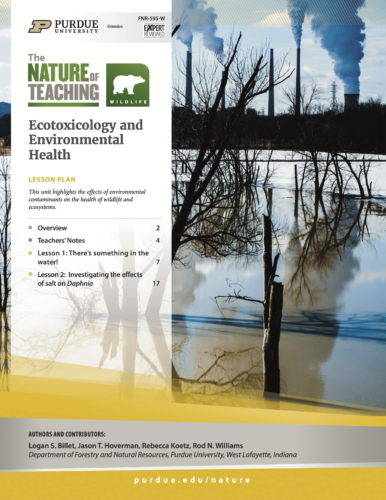 The Nature of Teaching: Ecotoxicology and Environmental Health is one unit in a series available from The Nature of Teaching – the place to go for teaching resources that focus on wildlife, food waste, health and wellness. In this series teachers can find free lesson plans, printables, posters, a photo library, information on upcoming workshops and more.
The Nature of Teaching: Ecotoxicology and Environmental Health is one unit in a series available from The Nature of Teaching – the place to go for teaching resources that focus on wildlife, food waste, health and wellness. In this series teachers can find free lesson plans, printables, posters, a photo library, information on upcoming workshops and more.
This unit highlights the effect of environmental contaminants on the health of wildlife and ecosystems with two lessons filled with worksheets, activities, lab report grading rubric sheet and more.
Lesson 1: There’s Something in the Water!
Lesson 2: Investigating the Effects of Salt Contamination on Daphnia
This 33-page PDF is written by Dr. Jason Hoverman; Logan Billet, Rebecca Koetz and Dr. Rod Williams.
For more resources, please check the Education Store.
Resources
Benefits of Connecting with Nature, The Education Store, Purdue Extension resource center
The Nature of Teaching: Disease Ecology, The Education Store
Resourceful Animal Relationships, The Education Store
The Nature of Teaching: Food Waste and the Environment, The Education Store
Adaptations for Aquatic Amphibians Activity 2: Water Quality Sneak Peak, Video, Purdue Extension YouTube channel
Rod Williams, Professor of Wildlife Science
Purdue University Department of Forestry and Natural Resources
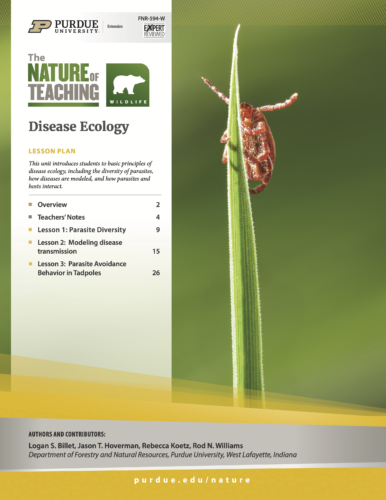 The Nature of Teaching: Disease Ecology is one unit in a series available from The Nature of Teaching – the place to go for teaching resources that focus on wildlife, food waste, health and wellness. In this series teachers can find free lesson plans, printables, posters, a photo library, information on upcoming workshops and more.
The Nature of Teaching: Disease Ecology is one unit in a series available from The Nature of Teaching – the place to go for teaching resources that focus on wildlife, food waste, health and wellness. In this series teachers can find free lesson plans, printables, posters, a photo library, information on upcoming workshops and more.
This unit introduces students to basic principles of disease ecology, including the diversity of parasites, how diseases are modeled, and how parasites and hosts interact. It includes three lessons with colorful animal cards to print along with worksheets and presentation.
Lesson 1: Parasite Diversity Activity
Lesson 2: Modeling Disease Transmission
Lesson 3: Parasite Avoidance Behavior in Tadpoles
This 33-page download PDF is written by Dr. Jason Hoverman; Logan Billet, Rebecca Koetz and Dr. Rod Williams.
For more resources, please check the Education Store.
Resources
Benefits of Connecting with Nature, The Education Store, Purdue Extension resource center
The Nature of Teaching: Ecotoxicology and Environmental Health, The Education Store
Resourceful Animal Relationships, The Education Store
The Nature of Teaching: Food Waste and the Environment, The Education Store
Rod Williams, Professor of Wildlife Science
Purdue University Department of Forestry and Natural Resources
Purdue Forestry & Natural Resources extension specialists gathered for a Facebook LIVE event held May 5th to answer questions on a wide range of topics from woodland management to wildlife habitat, ponds to invasive species and more.
Topics ranged from what to do about moles, voles and Canada geese causing damage in your yard, to how to pick the right tree for your landscape and how to measure the worth of your trees. The presentation also included segments on what to do about algae in your pond to how to know if you need to restock it as well as what to do about invasive plant species and how to protect your trees from deer damage.
Get advice from extension specialists Jarred Brooke, Lenny Farlee, Brian MacGowan, Lindsey Purcell, Rod Williams and Mitch Zischke in the video below.
If you have any further questions feel free to send your questions by submitting our Ask An Expert form.
Resources mentioned:
Purdue Extension – The Education Store
Purdue Report Invasive Species Website
Midwest Invasive Species Network Database
TreesAreGood.org
Find a Forester in Indiana
Improve My Property for Wildlife, Purdue Extension
Online Mole Program, Event May 14th, Purdue FNR Extension
Have you seen a hairless squirrel, Got Nature? Blog, Purdue FNR Extension
Stocking Fish, The Education Store, Purdue Extension Resource Center
Tree Selection for the “Un-natural” Environment, The Education Store
Selecting a Nuisance Control Operator, The Education Store
Forest Products Price Report (pdf), Indiana Department of Natural Resources (IDNR)
Indiana DNR Nuisance Goose Control Options (pdf), Indiana Department of Natural Resources (IDNR)
Turtles of Indiana, The Education Store
Salamanders of Indiana, The Education Store
Frogs and Toads of Indiana, The Education Store
Snakes and Lizards of Indiana, The Education Store
Aquatic Plant Management, The Education Store
Native Grasses, The Education Store
Preventing Deer Browsing on Trees/Shrubs, Video, Purdue Extension Youtube Channel
Brian MacGowan, Wildlife Extension Specialist
Purdue University, Department of Forestry and Natural Resources
Recent Posts
- Declining Pines of the White Variety – Purdue Landscape Report
Posted: April 10, 2024 in Alert, Disease, Forestry, Plants, Wildlife, Woodlands - Help Research Chronic Wasting Disease – Wild Bulletin
Posted: April 3, 2024 in Disease, Forestry, How To, Safety, Wildlife, Woodlands - Learn About Lead: Avoiding Lead Ingestion in Wild Game, Wild Bulletin
Posted: December 8, 2023 in Alert, Disease, How To, Safety, Wildlife - Inonotus Dryadeus, Butt and Root Rot of Oaks-Purdue Landscape Report
Posted: October 30, 2023 in Alert, Disease, Forestry, Plants, Wildlife, Woodlands - Dead Man’s Fingers-Purdue Landscape Report
Posted: October 12, 2023 in Alert, Disease, Forestry, Forests and Street Trees, Plants, Wildlife, Woodlands - Early Fall Color – A Symptom of Stress, Purdue Landscape Report
Posted: September 20, 2023 in Alert, Disease, Drought, Forestry, Forests and Street Trees, Plants, Urban Forestry, Wildlife - FNR “Ask an Expert” Connects Online Audiences to Resources
Posted: March 8, 2022 in Ask the Expert, Disease, Forestry, Forests and Street Trees, How To, Invasive Animal Species, Invasive Insects, Invasive Plant Species, Plants, Timber Marketing, Urban Forestry, Wildlife, Woodlands - Purdue Landscape Report Selected for TEAM Award
Posted: February 2, 2022 in Disease, Forestry, Forests and Street Trees, Gardening, How To, Invasive Animal Species, Invasive Insects, Invasive Plant Species, Plants, Urban Forestry - IN DNR Shares How to Keep Your Backyard Birds Healthy
Posted: September 1, 2021 in Alert, Disease, How To, Wildlife - Cause of Songbird Deaths Remains a Mystery
Posted: June 30, 2021 in Alert, Disease, Wildlife
Archives
Categories
- Alert
- Aquaculture/Fish
- Aquatic/Aquaculture Resources
- Ask the Expert
- Christmas Trees
- Community Development
- Disease
- Drought
- Forestry
- Forests and Street Trees
- Gardening
- Got Nature for Kids
- Great Lakes
- How To
- Invasive Animal Species
- Invasive Insects
- Invasive Plant Species
- Land Use
- Natural Resource Planning
- Nature of Teaching
- Plants
- Podcasts
- Ponds
- Publication
- Safety
- Timber Marketing
- Uncategorized
- Urban Forestry
- Webinar
- Wildlife
- Wood Products/Manufacturing
- Woodland Management Moment
- Woodlands
